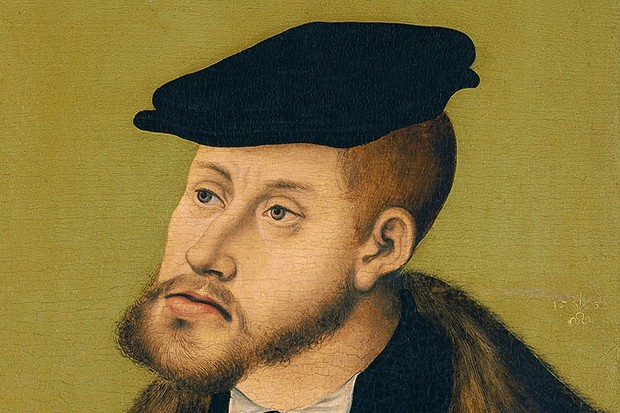What was the Habsburg jaw?
One family was an ever-present force in European affairs from the Middle Ages to the modern era, but, as Jonny Wilkes explores, the Habsburgs’ desperate bid to keep power within the family gave them a distinctive physical callsign, as well as dynastic longevity…

For centuries, the Habsburgs were one of the most prominent royal dynasties in Europe. They ruled as kings of Germany, from the 13th century, and as archdukes of Austria from the mid-14th century. They sat on the throne of the Holy Roman Empire from the 15th to 19th centuries. Their house dominated swathes of the continent with Habsburg rulers in a host of countries, most notably Spain.
But there was something else that became prominent about the Habsburgs: their jawline.
What was the Habsburg jaw?
Many members of the dynasty had the same physical trait of a protruding bottom jaw – a mandibular prognathism, medically speaking. The jutting chin could be so pronounced that the flattering portrait artists of the day could not manage to hide them. The condition even prevented some members of the dynasty from eating or speaking properly.
The ‘Habsburg jaw’ was a biological result from generations of inbreeding. In a bid to keep their power, the Habsburgs kept everything within the family. They relied on ‘consanguine’ marriages that partnered close relatives, such as first cousins, or uncles with their nieces.
- Read more | The Habsburgs: the dynasty that wouldn’t die
It’s true that close-family marriages weren’t exactly unusual among the royal houses of Europe, but the Habsburgs were the champions of consanguinity. Of the 11 marriages during the reign of the Spanish Habsburgs, from 1516 to 1700, only two were not incestuous.
Inbreeding certainly helped them keep hold of power, although over the generations it drained the gene pool nearly dry. In 1517, Italian diplomat Antonio di Beatis described the future Holy Roman Emperor Charles V as having “a long, cadaverous face and a lopsided mouth (which drops open when he is not on his guard) with a dropping lower lip”.
More like this
In 2019, a scientific study confirmed the link between inbreeding and the Habsburg jaw. By analysing dozens of portraits for signs of mandibular prognathism and maxillary deficiency (where the bones of the upper jaw do not develop properly, causing the upper lip to appear sunken), the results showed that the more evidence of inbreeding, the worse the jaw.
Who had the worst Habsburg jaw?
The five family members with the ‘worst’ Habsburg jaws, as far as that study was concerned, were the Holy Roman Emperor Maximilian I (1493–1508), his daughter, his nephew, his nephew’s great-grandson and the King Charles II of Spain (1665–1700).
Charles suffered from a host of conditions and disorders, among them epilepsy, as a result of 16 generations of inbreeding. His grandmother and aunt were the same person, while his mother was also his father’s niece. Such was his physical deterioration, as well as his mental decline, that his autopsy recorded that his body “did not contain a single drop of blood; his heart was the size of a peppercorn; his lungs corroded; his intestines rotten and gangrenous; he had a single testicle, black as coal, and his head was full of water”.
As for Charles’s Habsburg jaw, it was so pronounced that his upper and lower rows of teeth did not meet all. He could not chew his food, which served to exacerbate his health issues as he had multiple stomach concerns, and he had an oversized tongue that meant he could not speak clearly.
What happened to the last Spanish Habsburg?
Charles II would be the last Spanish Habsburg king. He became known as ‘El Hechizado’ (‘the bewitched’) and was doomed to end the line with his death, with no heir, at the age of 38.
The 2019 study calculated an ‘inbreeding coefficient’ in order to analyse the Habsburgs. The typical ‘F value’ of this coefficient is 0.0625, which is indicative of a child with parents who were first cousins. Philip I, the founder of the Habsburg dynasty in Spain, had an F value of 0.025; Charles II, his great-great-great-grandson, had an F value more than 10 times that, at 0.254.
“The Habsburg dynasty was one of the most influential in Europe,” said the lead researcher, Professor Román Vilas from the University of Santiago de Compostela in Spain, “but became renowned for inbreeding, which was its eventual downfall.”
Authors

Jonny Wilkes is a former staff writer for BBC History Revealed, and he continues to write for both the magazine and HistoryExtra. He has BA in History from the University of York.

Start the year with a subscription to BBC History Magazine - £5 for your first 5 issues!
As a print subscriber you also get FREE membership to HistoryExtra.com worth £34.99 + 50% London Art Fair 2024 Tickets




